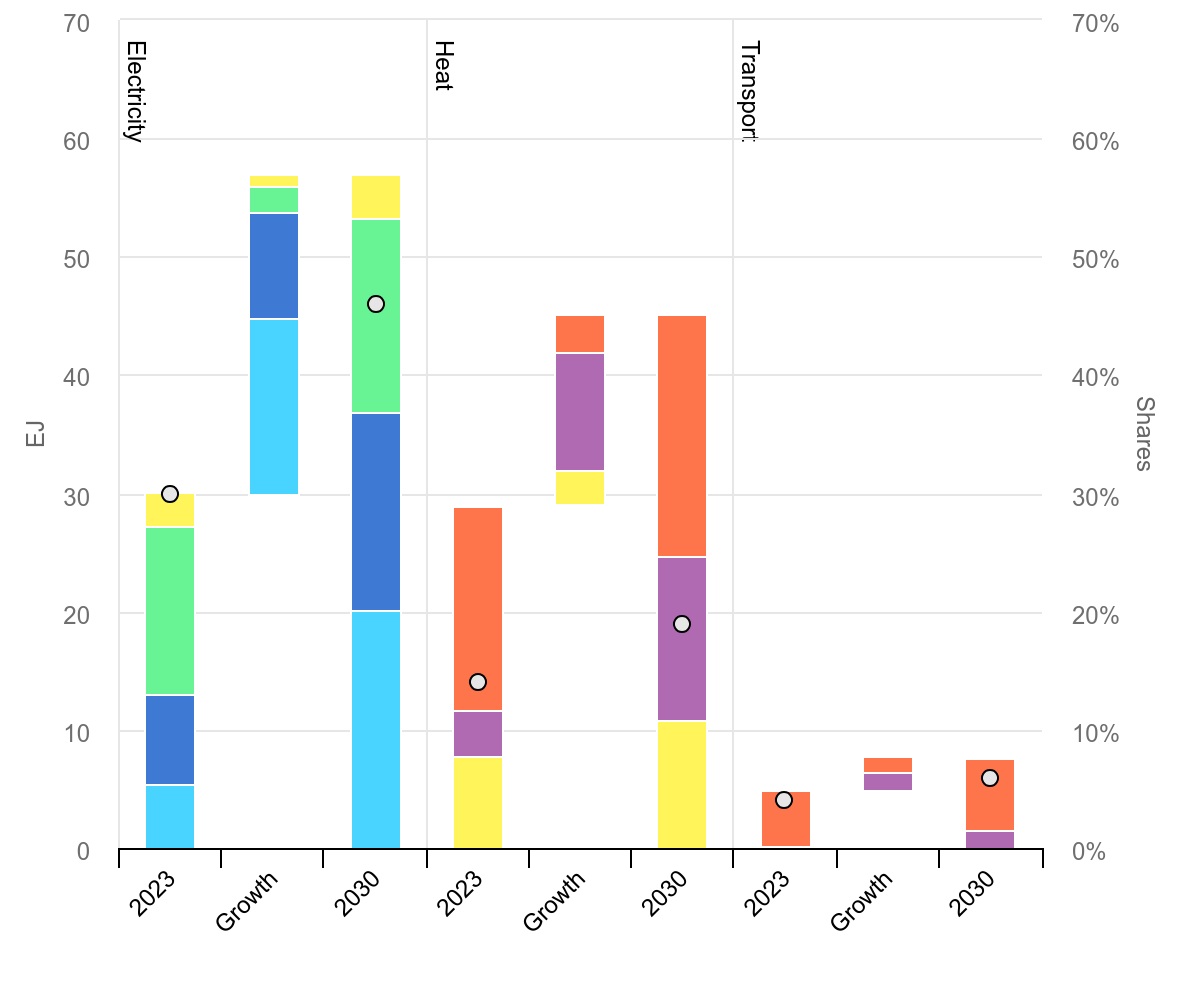The Role of Aluminium in Renewable Energy Technologies
Admin
2025-04-06
Renewable energy is not just trending in 2025—it's transforming our world. As carbon concerns mount, the spotlight falls on an unexpected champion: Aluminium. This everyday metal is changing the way we use clean energy. Aluminium is incredibly lightweight and surprisingly durable. It forms the structural framework of energy storage devices, wind turbines, and solar panels without adding weight.
Why is this particular metal so unique? It can be recycled infinitely, free from any form of corrosion and compatible with almost any green technology it comes into contact with.
According to a 2020 study by the World Bank, aluminium is the single most widely used material in solar photovoltaic (PV) applications. In fact, the metal accounts for more than 85% of most solar PV components- frames to panels.
Frames: Aluminium is widely used for solar panel frames due to its lightweight, corrosion resistance, and strength.
Panel Structures: Many mounting structures and support systems for solar panels are made of aluminium.
Other Components: Certain connectors, brackets, and heat dissipation parts in solar panels also use aluminium.
Therefore, aluminium is indeed leading the way, as renewable energy becomes more affordable, powerful, and widely available than ever before.
The sustainable future we are aiming to build has a silver lining—and it's made of aluminium. Read on to learn more about the role of aluminium in the renewable energy sector.
An Overview of Renewable Energy Technologies
The phrase "renewable energy technologies" refers to any method of producing energy that uses a renewable energy source, such as geothermal heat, biomass (biofuels and wastes), wind, solar, or water (tidal and hydro). These technologies play a key role in cutting down on fossil fuel use and fighting climate change. Between 2024 and 2030, solar energy technology is predicted to contribute to 80% of the expansion in worldwide renewable capacity, driven by the construction of new major solar power plants and an increase in rooftop solar installations by businesses and individuals. Wind power is also taking off, with more and more offshore wind farms popping up because they produce more energy and do not stand out as much. Hydroelectric power continues to be a big player in areas with lots of water.
When it comes to demand, solar energy is at the forefront, as experts predict PV installations will keep growing. Wind energy is also not far behind, with onshore and offshore projects gaining ground. Hydroelectric power remains steady, but we're seeing new ideas in smaller setups and updates to current systems.
Why is Aluminium Preferred in Renewables?
There are various reasons attributed to the use of aluminium in the renewables sector:
- Corrosion Resistance: The natural oxide layer of aluminium protects it from rusting, other degradation processes and makes it the perfect material for a water and chemical-laden environment.
- Recyclability: Recycling aluminium requires only 5% of the energy needed for new production while making it economically sustainable by lowering carbon emissions.
- Strength & Durability: Because of its strength, aluminium can withstand mechanical stresses without compromising performance.
- Cost Effectiveness: Over the life cycle, aluminium is more cost-effective than most alternatives, thanks to its durability and low maintenance.
- Thermal Conductivity: High thermal conductivity enhances the working of solar panels and other energy technologies.
- Lightweight: Aluminium is lightweight yet strong, which reduces costs for transport and installation during the construction of renewable energy projects.
Aluminium's Use in the Renewable Energy Sector
Aluminium has been valued for decades for its distinctive and irreplaceable features in a variety of industries, including the renewable energy sector. Solar, hydropower, and wind energy are three essential forms of sustainable energy, and aluminium is now employed in all of them.
Image Source: https://www.iea.org/data-and-statistics/charts/renewable-energy-demand-growth-by-sector-main-case-2023-2030
Versatile applications of aluminium:
- Solar Panels and frames: Aluminum's lightweight and long-lasting qualities make it crucial for solar energy frames, reflectors, and mounting supports. It is a great option for both residential and commercial solar installations since it makes transportation and installation simple, guarantees lifetime via resistance to corrosion, and improves appearance.
- Wind Turbines: Aluminum's strength-to-weight ratio, flexibility, and resistance to oxidation make it a popular choice for wind turbine components, including blades and nacelle housings. In offshore settings, it lowers maintenance costs and enhances turbine performance.
- Electric Vehicles: Because of its strength, dependability, and sustainability, aluminium is used in electric vehicles. By lowering weight, increasing range, and offering corrosion resistance, it improves vehicle efficiency. With over 90% of aluminium being recycled at the end of a vehicle's life cycle, aluminium's strong recyclability promotes both economic and environmental benefits, saving energy and increasing demand for green aluminium in EVs.
- Hydropower: Aluminium's recyclability greatly impacts its use in hydropower by reducing energy consumption and environmental impact. Recycling aluminium requires just approximately 5% of the energy needed for initial production, which is commonly supplied by hydropower, making it a sustainable solution for hydropower facilities and equipment. This recyclability supports efficient and low-carbon energy production, aligning with hydropower's renewable nature.
"Aluminium extrusions are extremely versatile, making them a perfect option for solar panel frames," explains Kimsen, a Vietnam-based manufacturer of aluminium products for an extensive range of areas and applications. Even the solar cells themselves can be improved by aluminium, and because aluminium has special reflection qualities, using implanted aluminium studs can greatly improve solar panel efficiency.
Major Renewable Energy projects that utilised aluminium:
- Solar Duck's Floating Photovoltaics: Innovation in the solar power industry is being stimulated by aluminium. Aluminium solar panels have excellent conductivity, reflectance, durability, and strength. They are also lightweight. Aluminium floating photovoltaics were created by Solar Duck, a Dutch offshore floating solar firm. The building can remain three meters above the sea thanks to the lightweight metal, which also resists rust and corrosion from moisture. Solar Duck was awarded €4 million to commercialise the floating photovoltaics models in 2023 after successfully creating and presenting the prototype.
- China's SPIC Directs its First Green Power Trade: The State Power Investment Aluminium and Power Company (SPIC) completed the first electrolytic aluminium industry in Ningxia, China, in 2024. This green electricity transaction, totalling 9 million kWh, has a beneficial environmental impact by dramatically lowering carbon dioxide, sulphur dioxide, and nitrogen oxide emissions. The corporation intends to raise the proportion of green electricity transactions in order to attain carbon neutrality in the electrolytic aluminium industry.
- Hydroelectric Installations: Aluminium is renowned for its ability to withstand corrosion. Turbine blades composed of lightweight aluminium extrusions are strong, effective, and resistant to water force. Intakes, structures, penstocks, and other components and frameworks also use aluminium extrusions. Aluminum's durability and light weight make it a valuable material for hydropower generation.
- Atlas Renewable Energy and Hydro Rein Collaborates: ALBRAS, Brazil's largest primary aluminium producer, plans to use a new 438-MW solar power project to power its smelter in Para state. The solar project is being built by a joint venture of Actis Group, Atlas Renewable Energy, and Hydro Rein. The Boa Sorte solar park in Paracatu, Minas Gerais, will include over 800,000 bifacial modules and generate 815 GWh of electricity, which will be purchased by Albras under a power purchase agreement (PPA) in US dollars from 2025 to 2044.
- Rewa Ultra Mega Solar Power Project: Aluminium is used in the mounting structures and frames of the photovoltaic solar panels of the Rewa Solar Project in Madhya Pradesh, India. The efficiency and durability of each 250 MW block are increased by the solar panels installed on fixed frame aluminium constructions. Because of its lightweight and corrosion-resistant qualities, aluminium plays a vital role in renewable energy infrastructure, helping to achieve India's clean energy targets and supporting initiatives like Rewa, one of Asia's largest solar parks. This project is an operational ground-mounted, grid-connected photovoltaic solar park whose area is 1,590 acres.
Rising Demand for Aluminium in Renewables and the Metal’s Contribution to Net Zero Economy
By 2030, additional demands from the renewable energy sector will require an extra 5.2 million tonnes of aluminium. Primarily, this comes from the expansion of solar and wind energy projects, which will contribute to the Net Zero economy through the development of sustainable energy infrastructure. Aluminium is expected to make a significant contribution to reducing carbon emissions and fostering green technologies, mainly due to its recyclability and energy efficiency. With countries like India, China and many more aiming at high renewable energy targets, aluminium will be at the forefront of this transition, helping build more efficient, durable, and sustainable energy systems.
Aluminum's lightweight, recyclable, and corrosion-resistant qualities are influencing renewable energy technology. Its contribution to solar, wind, and hydroelectric power will only increase as the globe moves towards a Net Zero economy, lowering carbon emissions and promoting sustainable energy infrastructure. Its adaptability and effectiveness make it a vital element in the move to cleaner energy systems.
Categories
Raw Materials
Scrap
Consumables
Primary Aluminium
Secondary Aluminium
Equipment
Technology
Downstream Products
Finished Products
Utilities
Services
Others
Recent Blogs
Subscribe to newsletter
Connect with us












